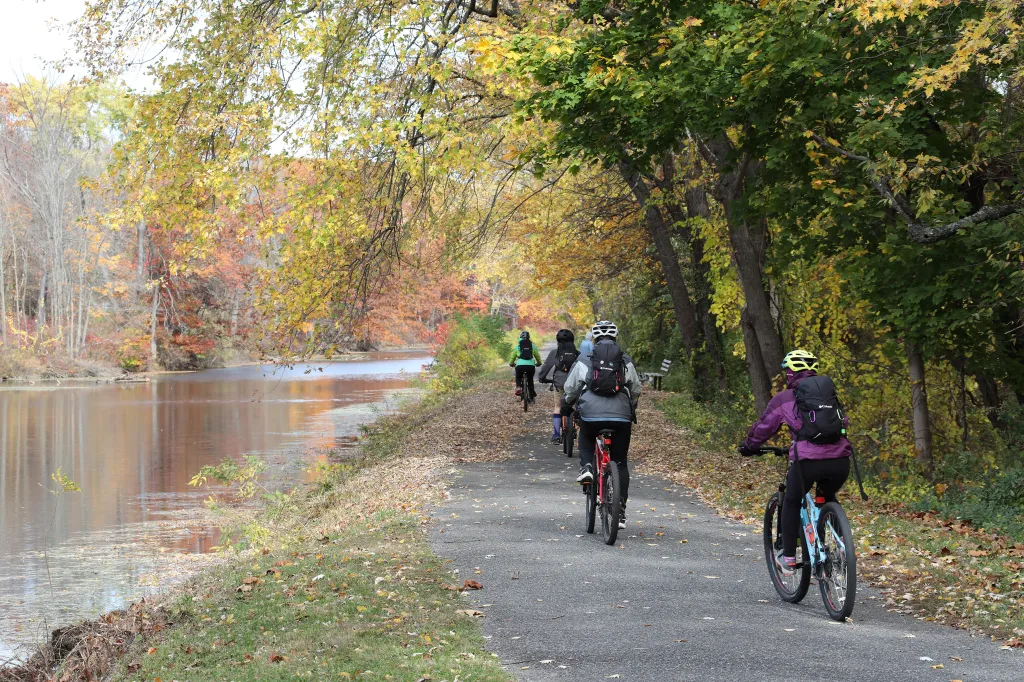
The Connecticut Department of Transportation recently conducted a survey that showed that 80% of the state’s residents did not feel comfortable walking or biking on state roads and roadways.
The CTDOT is looking to change that sentiment and improve safety for active transportation, which includes walking, bicycling, e-bikes and e-scooters, with a three-phase plan that has been underway since last year.
The CTDOT is in Phase 2 of the Active Transportation Plan and presented it to the public this week at open houses. The final open house is being held on Thursday at the New Britain Police Department Building, located at 10 Chestnut St., from 6 a.m. to 8 p.m.
According to the CTDOT, the plan will “serve as a strategic roadmap for developing and modernizing sidewalks, bike lanes, paved trails and intersection improvements on or along state routes to make it safer and more comfortable to walk, bike, use a wheelchair/mobility aid device or human-scaled electronic mobility devices.”
Among the tools for improvements for walkers and bikers are sidewalks, buffered outside shoulders, shared use paths, typical bicycle lanes, paved outside shoulders, buffered bicycle lanes, shared lane markings, separated bicycle lanes and advisory bike lanes. They will weight safety, community need, demand and feasible cost.
During Phase 1, which took place from fall 2024 to spring 2025, the CTDOT focused on existing conditions and needs. The department received feedback from the public and town and city leaders about what tweaks could be made and what works well. Phase 2 started this summer and ends this fall.
“We’re looking at our existing network of active transportation pathways that includes like the state trails, any on-road facilities,” Paul Ashworth, bicycle and pedestrian coordinator at CTDOT, said.
“And we also looked at crash data for safety. We’ve been working with local and regional governments to find out,” he said. “So not just about where our network is, but how our policies and programs are doing in terms of how successful they are at getting good outcomes for bicycle and pedestrians.”
Ashworth said he understands the 80% that responded to the CTDOT survey about not feeling safe walking or biking on state roads, and said that remains one of the main goals of the plan.
“I don’t blame them because of the driver behavior on our roads,” Ashworth said.
“Sometimes a sidewalk is cracked or there’s too many cars on the road for them to feel comfortable to bike or walk there,” he said. “On the flip side, we also ask them if there were better facilities would you use active transportation more? And again, about 80% said yes, so there’s an opportunity there to pull people out of cars, reduce congestion, traffic, and then also improve air quality, improve people’s connection to their environment and their communities. There’s a big opportunity there.”
According to the CTDOT, the Phase 2 meetings were used to gather information to make long-term improvements.
“We’re not just looking at creating a list of projects from the plan, we’re looking at the tools, strategies, policies and programs,” Ashworth said.
“Some of these are going to be short-term, where maybe we can get a list of, we can prioritize where there’s sidewalk gaps and we can try to find funding for those and close those up. That would be one thing. But then there’s also some things where maybe we tweak the way a policy works in a program and over time that will have an effect. But regardless of what those changes are, this plan will wrap up in 2026 and so hopefully we’ll have implementation starting soon after that.”
The Department of Transportation first adopted a transportation plan in 2009, and it was updated in 2019. This is the third edition that began in 2024.
“This is part of Connecticut Department of Transportation being a safety-centered organization. We’re thinking about all users when we’re handling our roadways in Connecticut. This is not something that the federal government is requiring that we do. It’s something that we’re doing as part of our general drive to increase safety in the state. And I think a good way to understand what the plan is to think of it in the phases and then the desired outcome,” Ashworth said.
The third and final phase will begin this winter and into next spring and will develop the final active transportation plan, which includes metrics that will assess the success of the plan over time.
“We know that pedestrian deaths have been increasing since about 2009. And then also today we have a change in federal policy, our shifting federal policy. We really have to respond to a lot of different things today. … Out of those previous plans, there were policy changes that enabled better facilities to be constructed,” Ashworth said. “We really want to give people from all over the state an opportunity to have input and learn about the plan.”